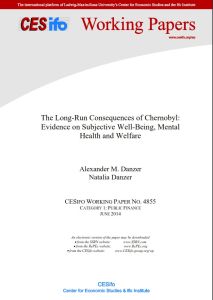Join getAbstract to access the summary!

Join getAbstract to access the summary!
Alexander M. Danzer and Natalia Danzer
The Long-Run Consequences of Chernobyl
Evidence on Subjective Well-Being, Mental Health and Welfare
CESifo Group Munich, 2014
What's inside?
After Chernobyl, fears of cancer proved more real than actual episodes of radiation-induced illness.
Recommendation
While it may not be as bad as developing cancer as the result of a nuclear meltdown, spending years worrying about radiation exposure can take a psychological and economic toll on a nation’s people. In this intriguing study, economists Alexander M. Danzer and Natalia Danzer find that the mental health effects lingering decades after the Chernobyl accident are the unanticipated fallout from the world’s biggest nuclear disaster. Their extensively documented report, with its detailed statistics and charts, draws lessons for governments about the human and financial costs of dealing with a massive catastrophe. getAbstract recommends this original work to public health officials, policy makers and economists.
Summary
About the Authors
Alexander M. Danzer is an assistant professor at the University of Munich. Natalia Danzer is the deputy director of the Ifo Center for Labor Market Research and Family Economics.


















Comment on this summary